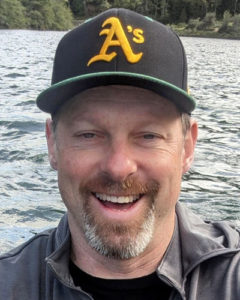A review by Noah Housh
End of the Road by William Riggs is an easy-to-read, data-rich dive into the world of transportation planning, with a stated agenda to help us all reimagine how we think about our streets.

Blending academic research and technical data with stories of personal observation and historical context, the book seeks to improve the places in which we live by taking back streets from the automobile and reshaping them for livability and social interaction. End of the Road unfolds in a descriptive, conversational tone with an eye toward “observations and experience.” Planning professionals and interested lay people will find Mr. Riggs’ latest book interesting and provocative.
For me, a practicing planner in Cotati, the smallest incorporated community in Sonoma County, California, the concepts in this book slide perfectly into current conversations our city is having regarding ‘complete streets,’ walkability, Vision Zero, and the transition to a greener transportation network. It was just last year that I first heard the Dutch word “woonerf,” literally translated as “living yard” or “residential grounds”; in practice, it’s an effort to truly balance the “pedestrians/ bicycles/cars” complete streets equation. End of the Road built on my newfound word, expanding on the concept with applied examples and on-the-ground descriptions of how a woonerf functions.
Riggs, currently a professor of management at the University of San Francisco and a transportation planner by education and profession, has studied how human beings move through our circulation networks. He found that the transition to automobile travel eroded many of the opportunities streets and roads once provided for social interaction. In his book, he juxtaposes case studies and anecdotal experiences (many from the Bay Area) with academic references and technical details to show how roads and streets have always served to support social gatherings and economic activity, in addition to transporting people and goods.
The book convincingly demonstrates how our engineering-focused perspective on automobile efficiency makes our streets less safe, and therefore less comfortable to navigate outside of a car. Riggs declares that, as we strive to make streets safer by engineering out the uncertainties for drivers, we lower driver awareness, actually making roads much less safe for pedestrians and bicyclists. His description of highway on-ramps as “… key places where drivers are mentally shifting into autopilot” was startling and all too real for me.
 To give the reader a basic understanding of transportation planning, Riggs successfully strikes a balance between information and storytelling. He then leverages that knowledge to illustrate how reinventing the concept of the road creates a path to reinvigorate the entire city. Riggs sees the streets and road networks that connect us all as an opportunity to increase social interaction and change society for the better. He sees increasing our interaction in the streets as key to the future of humanity, whether as a salve on the collective social rawness created by the isolation of the Covid-19 pandemic; an “economic engine” to assist brick-and-mortar businesses responding to the retail apocalypse, or a foundation on which to build a post-carbon transportation system.
To give the reader a basic understanding of transportation planning, Riggs successfully strikes a balance between information and storytelling. He then leverages that knowledge to illustrate how reinventing the concept of the road creates a path to reinvigorate the entire city. Riggs sees the streets and road networks that connect us all as an opportunity to increase social interaction and change society for the better. He sees increasing our interaction in the streets as key to the future of humanity, whether as a salve on the collective social rawness created by the isolation of the Covid-19 pandemic; an “economic engine” to assist brick-and-mortar businesses responding to the retail apocalypse, or a foundation on which to build a post-carbon transportation system.
This is a big aspiration, and the book is not perfect in its effort. However, I found Riggs convincing, and his explanations and applied examples were both educational and enlightening. The book occasionally frames correlation as causation, and it could have used another round of editing. But it is difficult to argue against leveraging the circulation network to improve so many of our pressing issues.
I believe everyone reading this review has a delineated physical path connecting to someone they love in their community. Inarguably, many of these paths, with some minor design changes, could be made to be more comfortable for use outside of a car.
End of the Road shows that often simple ideas can be profound when compared to current practices and rightly argues that making our streets safer for walking, biking, commercial activities, events, and general social activities, while also allowing for transportation, provides a huge opportunity to benefit our communities. The next step is for us as planners and citizens to do something about it.
 Reviewer Noah Housh is the Director of Community Development for the City of Cotati. He holds a master’s in public administration from Sonoma State University and a bachelor’s in economics with an emphasis in natural resource planning from Cal Poly Humboldt. You can reach him at nhoush@cotaticity.org
Reviewer Noah Housh is the Director of Community Development for the City of Cotati. He holds a master’s in public administration from Sonoma State University and a bachelor’s in economics with an emphasis in natural resource planning from Cal Poly Humboldt. You can reach him at nhoush@cotaticity.org

